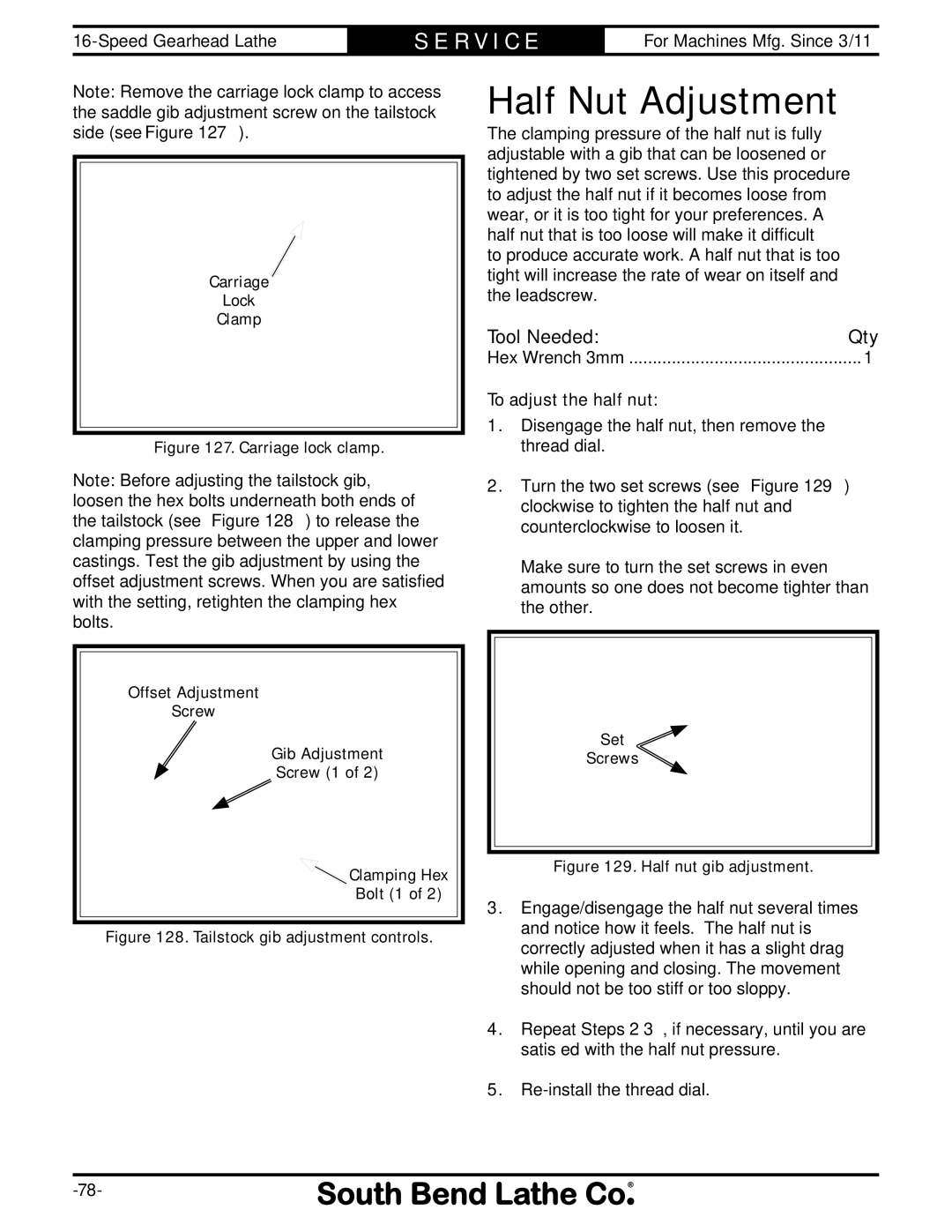
S E R V I C E | For Machines Mfg. Since 3/11 |
Note: Remove the carriage lock clamp to access the saddle gib adjustment screw on the tailstock side (see Figure 127).
Carriage
Lock
Clamp
Figure 127. Carriage lock clamp.
Note: Before adjusting the tailstock gib, loosen the hex bolts underneath both ends of the tailstock (see Figure 128) to release the clamping pressure between the upper and lower castings. Test the gib adjustment by using the offset adjustment screws. When you are satisfied with the setting, retighten the clamping hex bolts.
Half Nut Adjustment
The clamping pressure of the half nut is fully adjustable with a gib that can be loosened or tightened by two set screws. Use this procedure to adjust the half nut if it becomes loose from wear, or it is too tight for your preferences. A half nut that is too loose will make it difficult to produce accurate work. A half nut that is too tight will increase the rate of wear on itself and the leadscrew.
Tool Needed: | Qty |
Hex Wrench 3mm | ................................................. 1 |
To adjust the half nut:
1.Disengage the half nut, then remove the thread dial.
2.Turn the two set screws (see Figure 129) clockwise to tighten the half nut and counterclockwise to loosen it.
Make sure to turn the set screws in even amounts so one does not become tighter than the other.
Offset Adjustment
Screw
Gib Adjustment
Screw (1 of 2)
![]() Clamping Hex
Clamping Hex
Bolt (1 of 2)
Figure 128. Tailstock gib adjustment controls.
Set
Screws
Figure 129. Half nut gib adjustment.
3.Engage/disengage the half nut several times and notice how it feels. The half nut is correctly adjusted when it has a slight drag while opening and closing. The movement should not be too stiff or too sloppy.
4.Repeat Steps
5.
